





Heritage of ancient Ayurveda: 10 useful spices
Ayurveda – the most ancient tselitelsky practice which came to us from India. It represents the doctrine about maintenance of physical, psychological and moral health of the person by means of the complex of procedures including a diet, cleaning of an organism, breathing exercises, massage, and in case of a disease – and medicinal therapy. The healers practicing Ayurveda assign very important part to spices, and at the heart of Ayurvedic drugs, as a rule, there are they. It is considered that spices not only improve taste of the prepared dishes, but also influence on mental and state of mind of the person, and also are the powerful tools capable successfully to struggle with the heaviest illnesses.
Today we will acquaint readers with the spices and seasonings most widespread in Ayurvedic practice.
1. Cinnamon
The dried-up bark of draws of a cinnamon Ceylon – the evergreen tree which was initially growing only in Sri Lanka. Now the cinnamon is grown up in many tropical countries. Spice goes on sale in the form of small pieces of bark or powder.
Cinnamon has surprisingly pleasant aroma creating feeling of a cosiness, rest and heat. (Cinnamic aldehyde) which is its part циннамаль is a natural relaxant. Because of its impact on an organism cinnamon (or cinnamon oil) will widely be applied in an aromatherapy for the purpose of simplification of effects of stresses, reduction of nervousness and uneasiness at patients. Besides, cinnamon contains the substances possessing strong antioxidant and antibacterial action.
The real cinnamon costs very much. Quite often instead of it sell the whole or processed bark of other plant – a cassia, or a cinnamon Chinese. This seasoning has other chemical composition and less expressed aroma. But bark of a cassia possesses clinically proved anti-diabetic action.
To distinguish the real cinnamon very easily: in the whole type of its strip have a gentle, loose structure with thickness of layers of 0,5-0,7 mm (at the dried-up cassia bark thickness of layers makes 2-3 mm). Powder of cinnamon can be checked, having worked on it an iodine tincture droplet. Bark of a cassia contains a large amount of starch, and the powder made of it under the influence of iodine gains blue color. Does not happen to powder of the real cinnamon of it.
Cinnamon cannot be used at tendency to internal bleedings, a hyperexcitability, an idiopathic hypertensia. You should not be fond of spice and during pregnancy as cinnamon can raise a tone of smooth muscles that creates risk of an abortion.
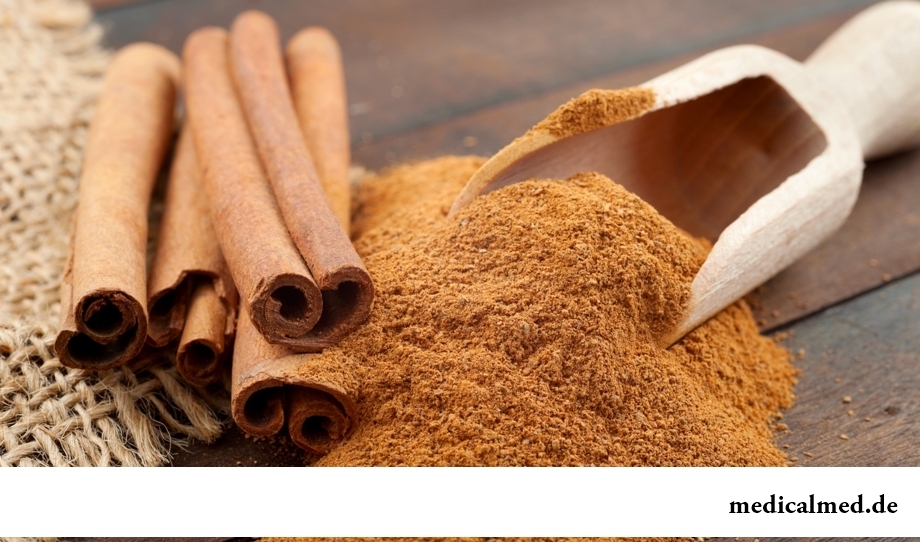
2. Turmeric
Spice is done of rhizomes of plants of family of ginger. Curcumine – natural dye (yellow or yellow-orange color) is a part of each of them. This substance is antioxidant, strengthens development of a number of enzymes and hormones, has pronounced antiinflammatory effect. Results of the conducted researches showed that regular use of a turmeric reduces risk of a course of a disease of Alzheimer and multiple sclerosis, and also slows down growth of cancer tumors.
In cookery the turmeric of three types is applied: long (for production of widely known seasonings and spices, for example, curry powder), fragrant (in the confectionery industry) and a tsedoariya (at production of liqueurs). Besides, powder of a turmeric is used as a food dye by production of cheeses, margarine, cookies, chips and various sauces. In house cookery the turmeric can be added to meat, vegetables, rice dishes, and also pastries.
The turmeric is contraindicated to the pregnant women, people having gastritises, pancreatitis and pathologies of biliary tract.
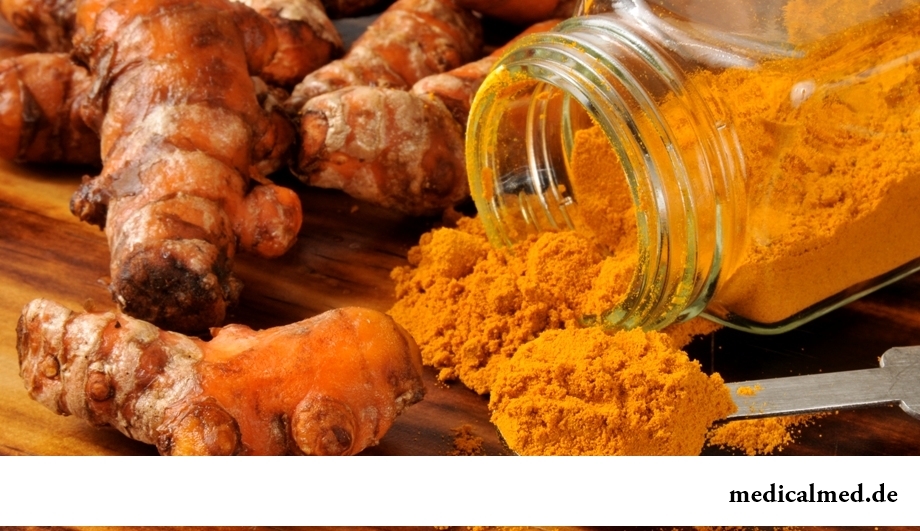
3. Ginger
The root of ginger is widely used in east kitchen in fresh, dried up (powder) and a marinated look, and also in the form of jam or candied fruits. It contains the substances normalizing metabolism and improving a condition of digestive organs. The root of ginger helps from nausea, kills a headache and symptoms of cold. In an aromatherapy ginger oil is used for treatment of psychoemotional frustration.
Among the people dreaming to lose weight water tincture of ginger is extremely popular as the means optimizing exchange processes and helping to get rid of extra kilos.
Unfortunately, not all can use ginger. Enter the list of contraindications:
- Late durations of gestation;
- High temperature, feverish states;
- Skin illnesses;
- Idiopathic hypertensia;
- Cardiovascular problems;
- Hemorrhoids;
- Cholelithiasis;
- Liver diseases;
- Gastritises and peptic ulcer;
- Digestive tract tumors.
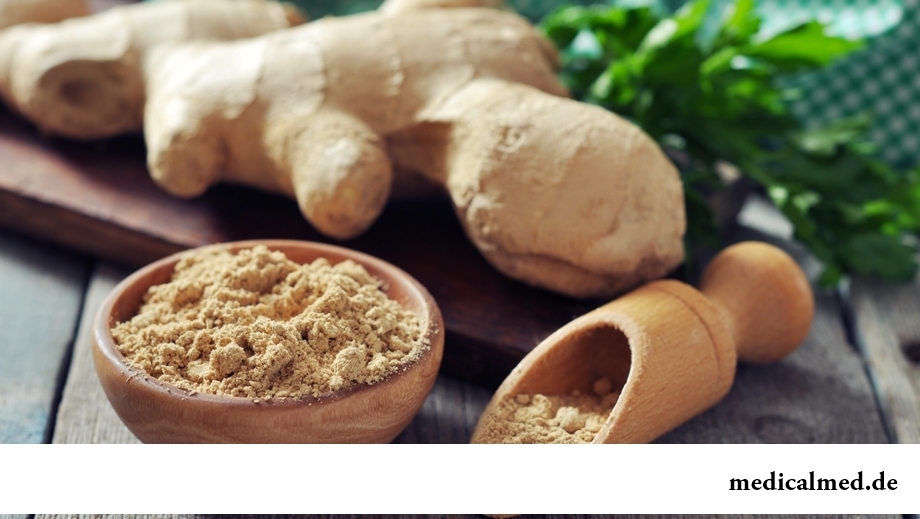
4. Kumin (zira)
Spice possesses the strongest antiseptic action and contains active antioxidants. It is proved that the zira well influences processes of digestion and a metabolism. It successfully kills stomach aches, helps at a meteorism and diarrhea. Besides, кумин normalizes cardiac performance, reduces risk of development of a myocardial infarction, reduces coagulability of blood. There are data that use of a zira improves sight and stirs up activity of a brain.
Kumin represents the dried-up seeds of a plant of family of umbrella. In cookery they are used in general or the crushed look as seasoning to meat dishes, soups and also as a component of hot sauces.
Zira is contraindicated at a peptic ulcer and inflammatory diseases of the digestive system.
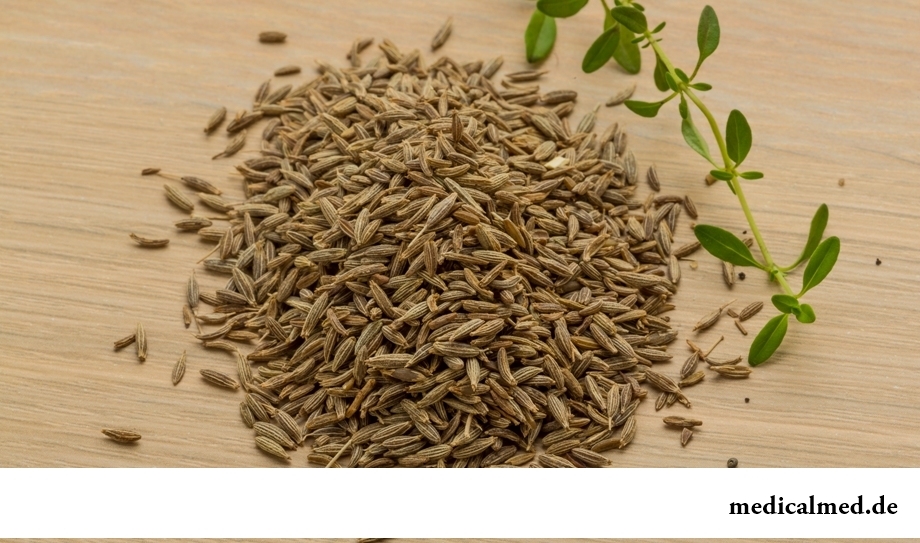
5. Fennel
Fennel – a plant of family umbrella. In cookery its seeds use for preparation of sauces, soups, and a pickles. Fresh leaves include in salads. The substances possessing spasmolytic, expectorant and antimicrobic action are a part of a plant. Water infusion of the crushed seeds improves digestion, saves from a meteorism. Do "dill water" of them – the means saving newborns from intestinal gripes.
Fennel is not recommended to be used in food to the people having tendency to epileptic seizures or suffering from disturbances of a cordial rhythm.

6. Coriander
Coriander call seeds of an eurysynusic garden plant – cilantro which fresh and dried-up leaves are one of the most favourite elements of east and mountain kitchen. Seeds use for preparation of spicy seasonings, sauces, pastries and drinks.
Spice possesses cholagogue action, helps to clear a liver and to bring toxins out of an organism. Besides, in Ayurveda the coriander is considered a diuretic, antifungal and antiseptic agent. Infusion of seeds is recommended to accept at infections of urinary tract.
You should not be fond of a coriander in the presence of thrombophlebitis, heart troubles and vessels, a diabetes mellitus, gastritis, a hyperoxemia of a gastric juice. The pregnant women feeding, and also women, having problems with a menstrual cycle cannot use it. At unlimited consumption cilantro can do much harm also to men: eating more than 30 g of greens or 4 g of seeds a day, it is possible to receive problems with a dream, decrease in memory and even weakening of a potentiality.

7. Carnation
The dried-up buds of a clove tree are applied in cookery very widely. They are a part of various confectionery, drinks, sauces, are used for conservation of vegetables and fruit.
Spice contains essential oils most of which effective component is eugenol. It gives to a carnation antimicrobic, antiparasitic and antiseptic activity, and also is the reason of diuretic, antispastic and anticonvulsant action of a carnation. It is proved that spice helps to reduce probability of emergence of attacks of bronchial asthma, well influences digestion, kills pain including tooth.
It is undesirable to tack to use to the people having a hypertension or cankers of a stomach and intestines. Besides, spice can do harm to pregnant women and the feeding women, and also to children is younger than two years.
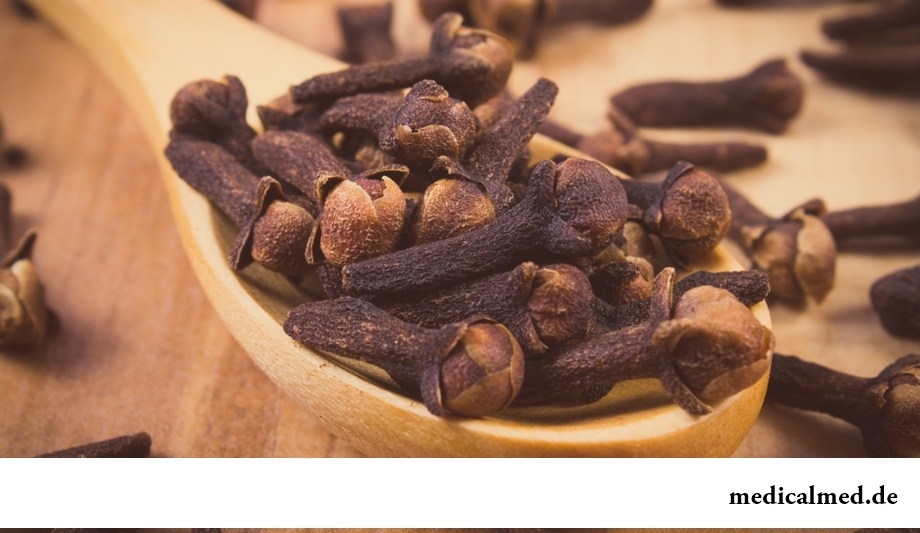
8. Chili pepper
Chile hot pepper is one of the most widespread seasonings. It is added to meat, fish, vegetable and groat dishes, soups, sauces, sausages. There is a set of species of this plant, with fruits of the different sizes, forms and coloring. Upon purchase of fresh Chile it is necessary to consider that the more small fruits, the more sharply their taste.
Fruits of Chile contain capsaicine – the substance with a pungent smell and burning taste accelerating metabolism and improving digestion. It is considered that the regular use of spice helps to lose weight. In Ayurvedic practice chili pepper is used for activation of work of a brain and a liver, decrease in frequency of epileptic seizures and attacks of bronchial asthma. There are data that burning pepper oppresses growth of malignant new growths.
Chile can do harm in the presence of a peptic ulcer of a stomach and a duodenum. In order to avoid irritation of mucous membranes of digestive organs it is not recommended to give to small children.
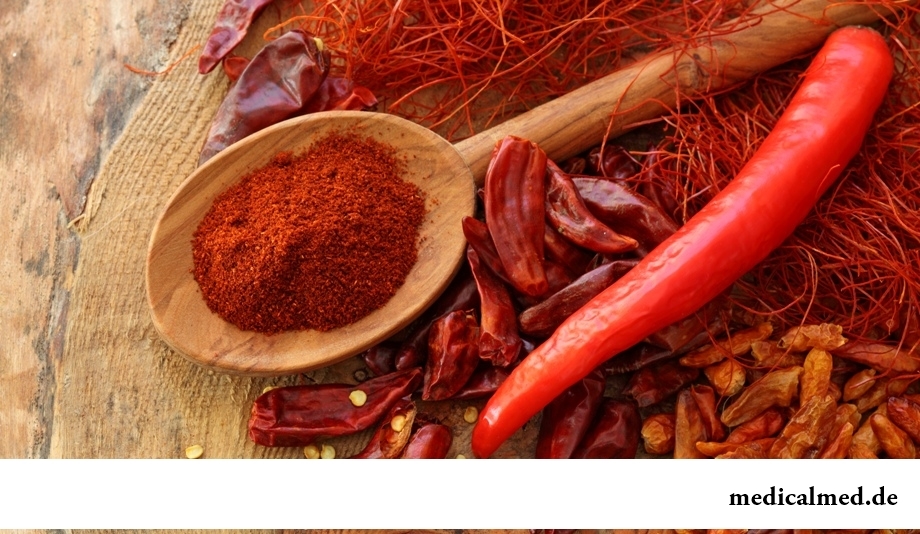
9. Cardamom
Fruits of the perennial herbaceous plant cultivated in Guatemala, India and on Ceylon. Have very strong aroma. Spice is added to sweets, pastries and drinks: in the countries of the East very much populyara tea and coffee with cardamom.
In Ayurveda cardamom is considered tonic and aphrodisiac, and also the product promoting removal of slime from an organism. It is recommended for treatment of bronchitis, colds, by asthmas. Besides, spice is applied to improvement of blood circulation and disposal of "bad" cholesterol.
Upon purchase of cardamom it is necessary to pay attention to its freshness as aroma quickly exhausts. It is a little contraindications to use of cardamom: the people having cankers of a stomach and intestines should not be fond of it.
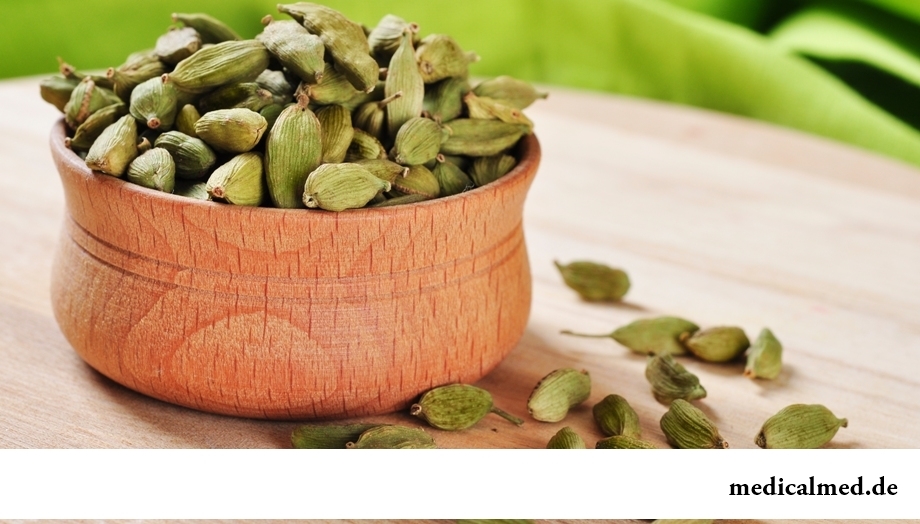
10. Trigonella (фенугрек, Shambala)
Plant of family of bean. Eat a grass and seeds which contain a unique set of useful components. Spice has expectorant, febrifugal, antiinflammatory and fortifying effect. The gormonopodobny substances helping to normalize a condition of women in the period of a menopause are its part. Seeds of a trigonella strengthen a lactation, optimize arterial pressure, stimulate work of bodies of a GIT.
Pregnant women, and also the people having pathologies of a thyroid gland cannot use a trigonella in food.
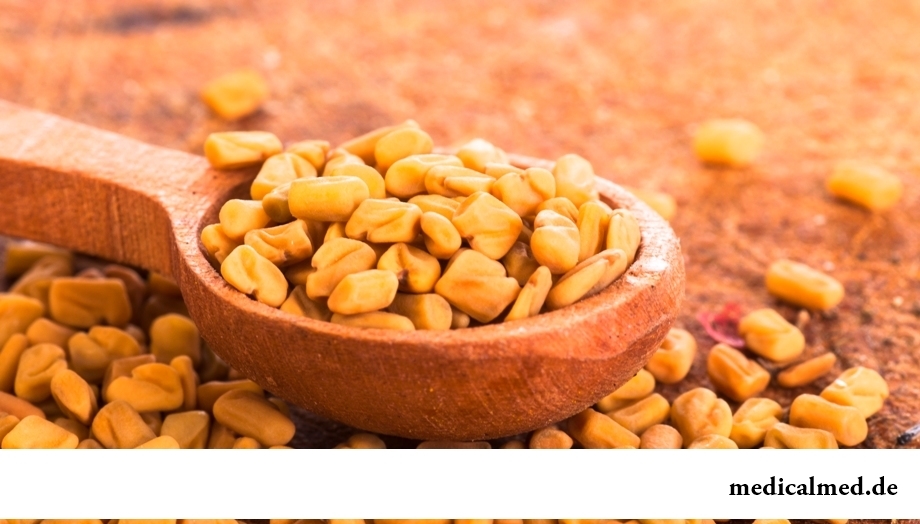
Spices not only improve taste of food. Many of them are since ancient times used in treatment of the most different diseases, and the therapeutic effect in most cases is confirmed by both scientific research, and practice. Nevertheless, when using spices in food it is necessary to consider a possibility of development of an allergy. Use of unfamiliar spice should be begun with the minimum quantity, carefully monitoring reaction of an organism.
Human bones are stronger than concrete four times.

The name of this disease precisely reflects the problem reason: it consists in the bra fastener pressure upon a certain zone...
Section: Articles about health
In consciousness of our many compatriots idea that folk remedies if are no more effective, than medicinal "chemistry" strongly took roots, then are precisely less harmful. Unfortunately, it is not always fair: some receptions treating...
Section: Articles about health
Frosty air, fresh wind and easy snowball at most of Russians are associated with cheerfulness, health and cheerful entertainments on which our winter is so generous. But, unfortunately, cold season sometimes brings also troubles with health. It is not about seasonal colds and frostbites, and about those chronic illnesses which symptoms are shown preferential in the winter....
Section: Articles about health
The main role in development of a peptic ulcer of a stomach and duodenum the bacterium Helikobakter plays pilor. Activity and Wuxi...
Section: Articles about health
Not without reason doctors say that 90% of diseases begin or develop because of misoperation of intestines. Disturbance of its functions is connected with various factors among which the important place belongs to excessive "clutter" of an intestinal path. In an organism скаплив...
Section: Articles about health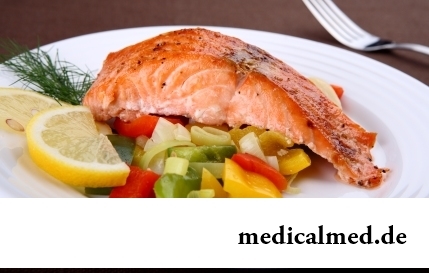
Diseases of joints often begin imperceptibly for the person. The first stages of destruction of the cartilaginous tissue providing soft and free sliding of heads of bones in joint bags proceed slowly and absolutely without serious consequences. Especially unpleasantly for the fact that this process is not connected with advanced age: degradation of joint surfaces is, as a rule, noticeable after 30 years. It means that practically each able-bodied person at any time can face sad results...
Section: Articles about health
EKO, or extracorporal fertilization - a method of treatment of infertility which became the reason of a set broken mines in due time...
Section: Articles about health
To look healthy and means well-groomed not only to be pleasant to people around, but also to feel strong, sure and taken place. Specialists in the field of cosmetology quite often note that whether not all women are able to look after skin...
Section: Articles about health
The pancreas performs two functions in a human body: release of enzymes without which digestion of carbohydrates, fats and proteins, and a producing hormones is impossible. The most important of them - insulin, is the main participant of carbohydrate metabolism normalizing processes of education and utilization of glucose, the main energy source for an organism....
Section: Articles about health
Is told about advantage of domestic animals for development of the child much. But many parents nevertheless do not hurry to bring pets as about...
Section: Articles about health
For the last decades the diabetes mellitus of the second type became really world problem. The number of cases annually increases, and average age of patients for whom the illness is diagnosed, steadily decreases. Specialists consider that one of osno...
Section: Articles about health
Some people consider what for medicine of the 21st century of secrets in the field of health of the person almost does not exist. It absolutely not so. The more answers scientists receive, the more the most difficult questions are raised for them by life. Besides, there are diseases which are not explained with science in any way of which existence people know for 100-150 years. These diseases meet not so often, but from some of them nobody is insured....
Section: Articles about health
Feeding by a breast - the integral part of ideal motherhood allowing to come into contact with the kid and to create since early years...
Section: Articles about health
Many parents of children at the age of 2-4 years face excessively whimsical behavior of the child. The kid exhausts constant crying and whims not only the parents, but also himself. In what the reasons of children's whims. And how to fight with them?...
Section: Slideshow
The brain of the person is studied not one hundred years, but the quantity of the riddles connected with this body increases rather, than decreases. Perhaps, numerous delusions concerning a structure and functioning of a brain are explained by it, many of which arose long ago, but continue to exist and today. Such we are ready to acquaint readers with the most widespread myths....
Section: Articles about health
We present to yours the TOP of the medicamentous means exerting the stimulating impact on a potentiality, i.e. on ability of a muzhcha...
Section: Articles about health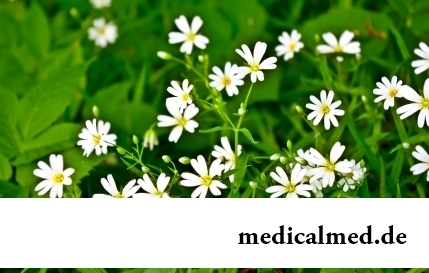
Wood louse – the ordinary-looking unpretentious plant extended in all territory of our country. It quickly expands, and sometimes fills sites, bringing a lot of chagrin to gardeners. Perhaps, they would be upset less if knew that the wood louse is the prices...
Section: Articles about health
It would seem, about it there can be no disagreements: water is necessary for a human body for normal life activity, and about how and when it should be drunk, all know. It turned out that the situation is not absolutely so: for many years there are very persistent delusions connected with this question. Let's consider the most widespread of them....
Section: Articles about health
The popular expression "run from a heart attack" became the motto of the people supporting active lifestyle. Moreover, run became peculiar...
Section: Articles about health
The phenomenon of improvement of a condition of the patients at administration of drugs who are not containing active agents, so-called effect of placebo is known long ago. At the end of the 18th century the American doctor Perkins began to treat people the "miracle" sticks made of a spl...
Section: Articles about health
Stability of a hormonal background is one of the most important conditions of preservation of health of the woman. At the same time endocrine system – the thin device extremely sensitive to any external influences. Changes of a way of life (for example, a diet), emotional stresses, infectious diseases, reception of some drugs can become the reason of hormonal failure. Besides, work of hemadens has the natural specifics in certain moments of life: on various St...
Section: Articles about health
Deciding to get rid of an addiction, not all imagine what effects it is necessary to face. Process of refusal from ку...
Section: Articles about health
The state of health of the person depends on many factors. One of the most important is the constant, but not exhausting a physical activity. In the presence of various illnesses specialists often advise patients to do swimming which by right borrows ведущ...
Section: Articles about health
No, probably, the person who would not have cold. Cold, cough, a headache – these symptoms are known to everyone. The peak of catarrhal diseases is the share of fall. SARS already came to schools and kindergartens, flu slowly makes the way to the cities, in a word, winter close!...
Section: Articles about health
According to World Health Organization, every third inhabitant of Earth has excess weight, and every tenth suffers ожирен...
Section: Articles about health
It is known that the person for 80% consists of water which participates in all processes of an organism. The person loses liquid daily – as a result of sweating, breath, an urination, and its insufficient completion due to various reasons can bring to обезвожив...
Section: Articles about health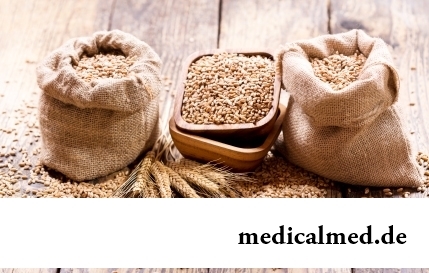
The concept "gluten" (differently, a gluten) combines group of the proteins which are a part of rye, barley and wheat. For most of people the use of the food stuffs containing a gluten not only is safe, but also it is very useful. Nevertheless, there is a number of myths about negative effect which allegedly gluten has on health of the person....
Section: Articles about health
